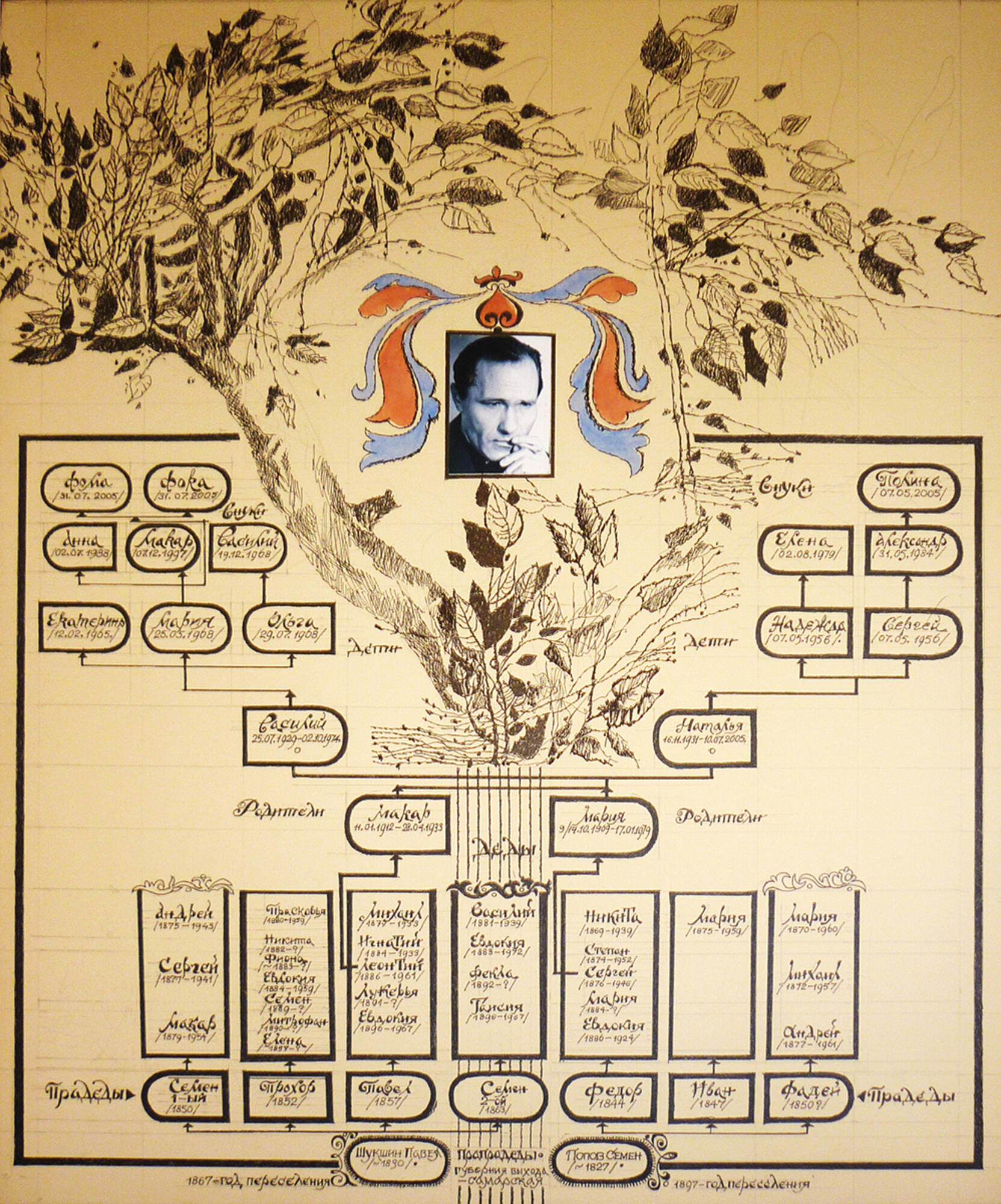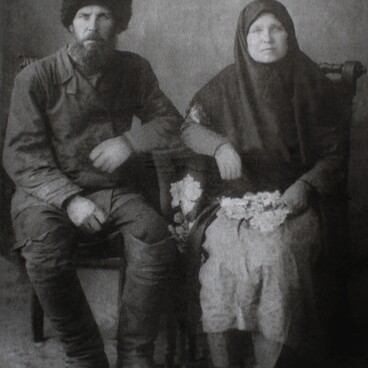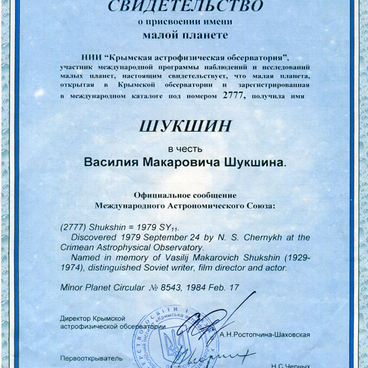Vasily Shukshin’s tree of life graphic work was created by professor Vladimir Ramensky. He is a member of Russian designer and artist unions, an honoured artist of the Russian Federation, and a recipient of Demidov Prize for outstanding scientists. The author has gifted this drawing to the museum in 2011.
Ramensky placed a portrait of Vasily Shukshin in the centre of the family tree, under a bright crown of leaves. The author depicted ancestors of the family, the great-great-grandfathers of the director, at the base of the trunk, next to the roots. Main family line was located on the trunk, while branches served as various offshoots of the bloodlines. The artist positioned Shukshin’s grandchildren and great-grandchildren, who are the most famous among his descendants, at the crown of the tree.
Ramensky included both paternal and maternal ancestors and descendants into Shukshin’s lineage. Parents Makar and Maria Shukshin, as well as the director’s grandparents, are depicted on a straight branch along their lines. Side branch is dedicated to great-grandparents, sisters, brothers, and nephews. While the author did not indicate exact dates of birth and death for Shukshin’s ancestors, chronology was respected.
The tree depicted not only direct family ties, but second and third ones as well. Ramensky relied on Shukshin family tree, which was created by Anastasia Pryakhina, the head of Vasily Shukshin People’s Literary Museum at Biysk young offenders’ institution. She compiled a list of more than 1000 relatives and 9 generations.
In her work, Pryakhina offers the concept that a person is permanently connected to their ancestors, contemporaries, and descendants by unseen ties. Therefore, our present is a continuation of the course of history, and it cannot be considered separately from the past or the future.
Shukshin paid close attention to family history. He wrote, ‘I hardly ever envy anybody, but I envy my distant ancestors — their tenacity and great strength… I would not know what to do with such power today. I imagine how many hardships they endured on their way from the north of Rus, from Volga and Don, to Altai. I am simply imagining, and they have walked this path’.
Ramensky placed a portrait of Vasily Shukshin in the centre of the family tree, under a bright crown of leaves. The author depicted ancestors of the family, the great-great-grandfathers of the director, at the base of the trunk, next to the roots. Main family line was located on the trunk, while branches served as various offshoots of the bloodlines. The artist positioned Shukshin’s grandchildren and great-grandchildren, who are the most famous among his descendants, at the crown of the tree.
Ramensky included both paternal and maternal ancestors and descendants into Shukshin’s lineage. Parents Makar and Maria Shukshin, as well as the director’s grandparents, are depicted on a straight branch along their lines. Side branch is dedicated to great-grandparents, sisters, brothers, and nephews. While the author did not indicate exact dates of birth and death for Shukshin’s ancestors, chronology was respected.
The tree depicted not only direct family ties, but second and third ones as well. Ramensky relied on Shukshin family tree, which was created by Anastasia Pryakhina, the head of Vasily Shukshin People’s Literary Museum at Biysk young offenders’ institution. She compiled a list of more than 1000 relatives and 9 generations.
In her work, Pryakhina offers the concept that a person is permanently connected to their ancestors, contemporaries, and descendants by unseen ties. Therefore, our present is a continuation of the course of history, and it cannot be considered separately from the past or the future.
Shukshin paid close attention to family history. He wrote, ‘I hardly ever envy anybody, but I envy my distant ancestors — their tenacity and great strength… I would not know what to do with such power today. I imagine how many hardships they endured on their way from the north of Rus, from Volga and Don, to Altai. I am simply imagining, and they have walked this path’.



